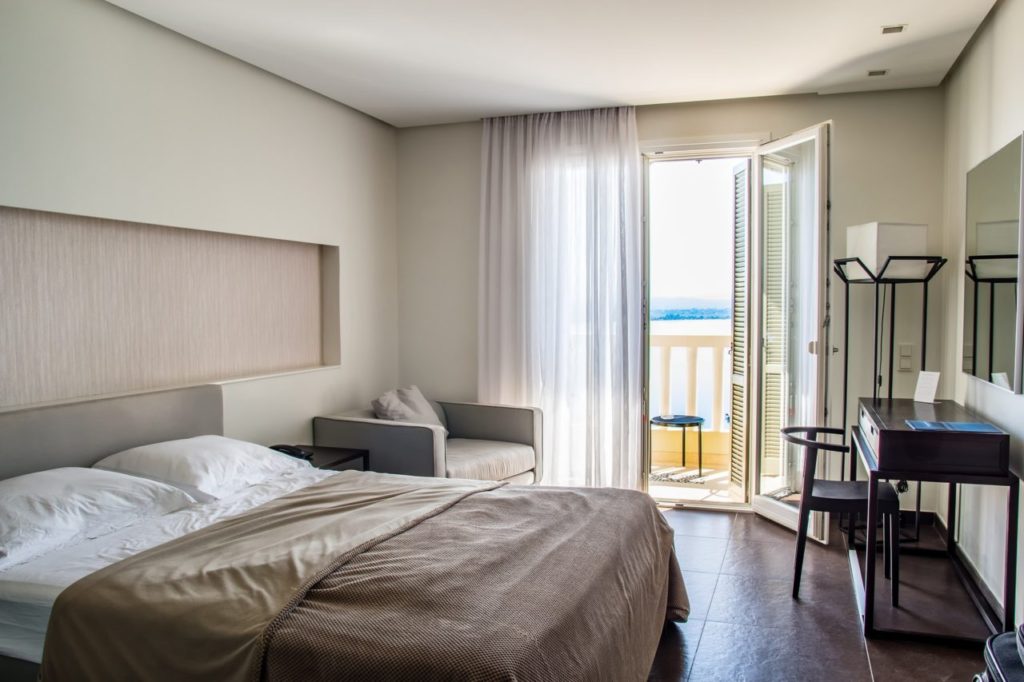Letting natural light into your home will instantly enhance your home’s appearance — but it’s also beneficial for your health. Natural light can help improve your mood, boost your vitamin D levels to keep your immunity up, and regulate your sleep patterns. But if you live in a part of the U.S. that doesn’t get natural light year-round, such as Wisconsin or Alaska, you might struggle with dimly lit rooms.
Here are 8 tips to boost the natural light in your house, so you can enjoy the benefits of sunlight, year round.
1. Add mirrors
If you live in a city where your windows are often blocked by neighboring tall structures, you might find you only get sunlight on certain sides of your house. Or your house might only have windows on one side of the room.
One trick to boost light in a room with dimmer lighting or few windows is to add mirrors directly across from a light source. This can help bounce the light from the window, reflecting it across the room, while also making the area look bigger. It’s a win-win.
2. Choose the right window coverings
Heavy linen or velvet curtains might add to your room’s style, but if they’re blocking light during the day, consider airier curtains, like sheer panels or light-filtering options. If you don’t want to part with your curtains, keep them open during the day and use window film or slanted blinds to allow light to still flow through your space, while offering you privacy.
3. Lighten up your walls
Paint can do a lot of heavy lifting for your room’s decor — and it can also help lighten and brighten your space, especially if there’s minimal lighting. Stick with whites or off-white neutrals for rooms with low access to light to keep them feeling larger and brighter than they actually are. Not only will white paint lighten the room, but it also helps reflect natural light, so you can enjoy the benefits of sunlight inside.
4. Add skylights or solar tubes
If your home just doesn’t get enough light, consider adding skylights or a more budget-friendly option, solar tubes. Although these renovations will cost more than a gallon of paint or a mirror, they’re a surefire way to help let more sunlight into an otherwise gloomy and dark space.
If you’re looking to sell your home and you’re worried about the lack of natural light, adding a skylight or solar tube can improve your home’s overall appearance while upping its value.
5. Arrange furniture below windows
Cutting off even a little bit of your window can impact how much light is coming into your space. Try to arrange your furniture so it rests just beneath a window but doesn’t block it. If a cabinet or bookshelf won’t fit nicely between windows, consider changing the layout of the room to move tall furniture pieces to opposite walls. Or sell furniture that doesn’t work well in your space in favor of shorter versions that won’t block sunlight.
6. Add glossy finishes
While mirrors are one of the easiest ways to reflect natural light in your room, they’re not the only option. Adding artwork with glossy frames and glass or high-gloss furniture pieces, such as a chrome, brass, or glass coffee table, can also help bounce light around the room. Even small details can help. Shiny metal knobs, accent pieces, or wall decor can help brighten up your space.
7. Add real greenery
Plants can also help boost your mood and improve your home’s air quality. Although many need direct sunlight to thrive, they also pay you back dividends by helping to bounce and reflect that natural light into your room.
8. Install more windows
If you’re able to invest in adding more natural light into your home, it might make sense to add more windows to dark rooms or smaller windows at the top of stairways or particularly tall rooms. Although this is one of the more expensive options on this list, if you’re worried a potential buyer will want more natural light, it may make sense to add more sources directly.
9. Replace walls with glass
Another option to add more light to a space with minimal windows is to replace walls with glass panels or doors. For instance, if your kitchen gets poor sunlight, but has a small doorway connected to a well-lit foyer or entryway, you might consider replacing part of the wall between the two rooms with glass to add a burst of light into a darkened room. Just be sure to talk to a professional before knocking down walls.
4 Tips for Protecting Artwork from Sunlight


